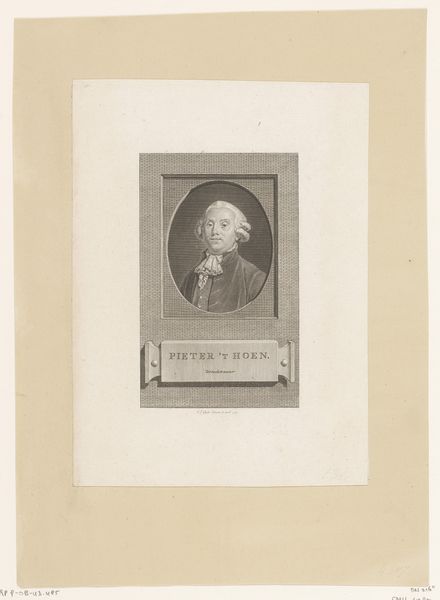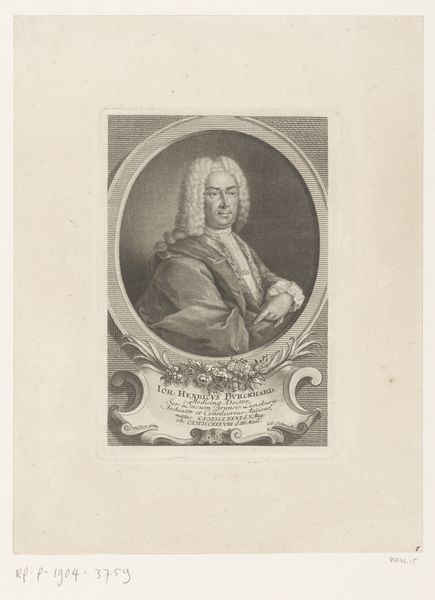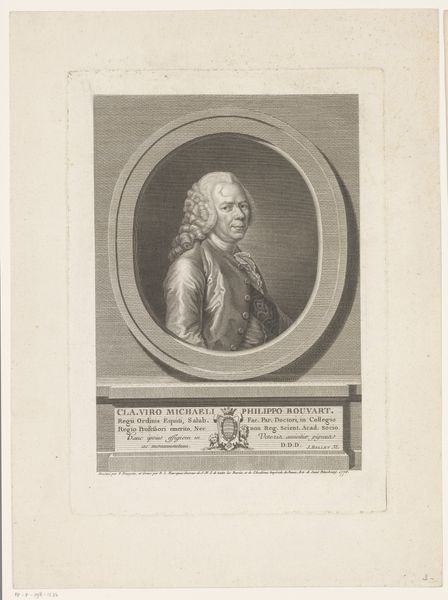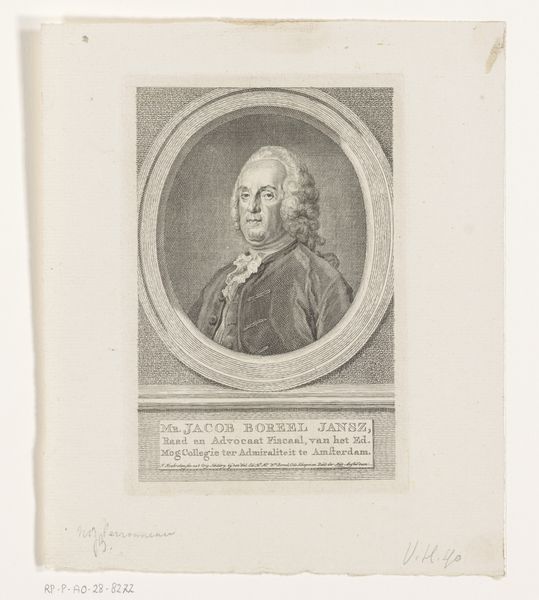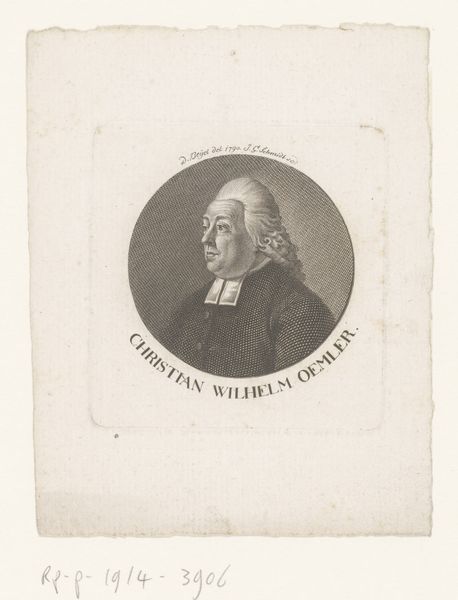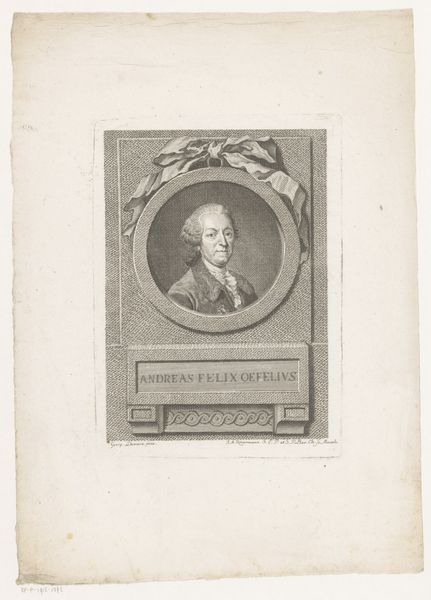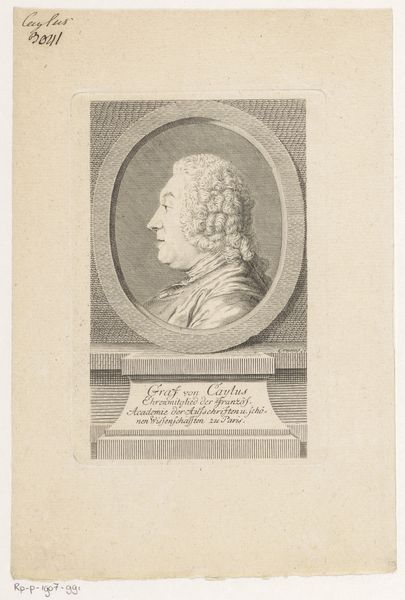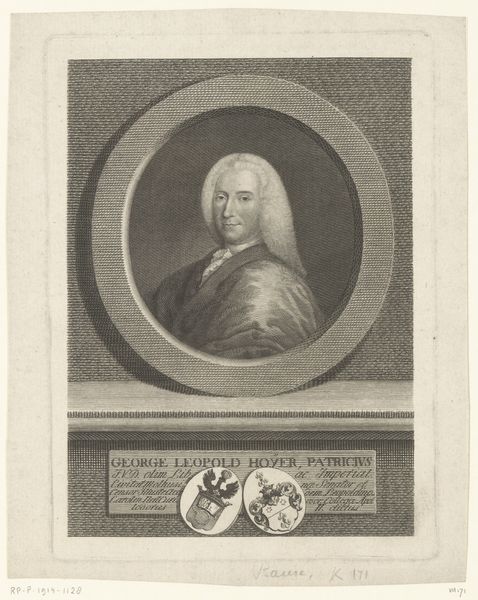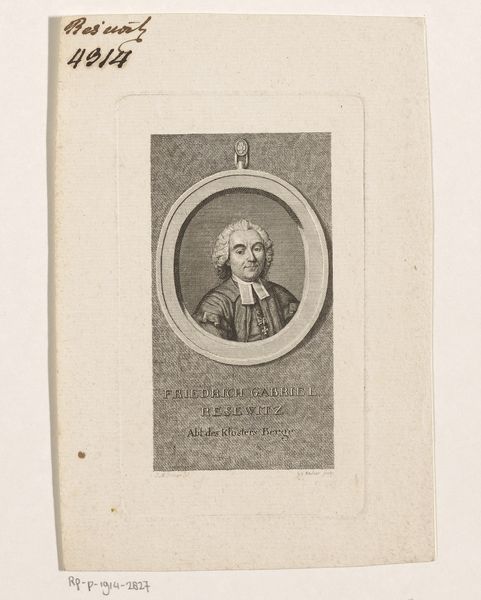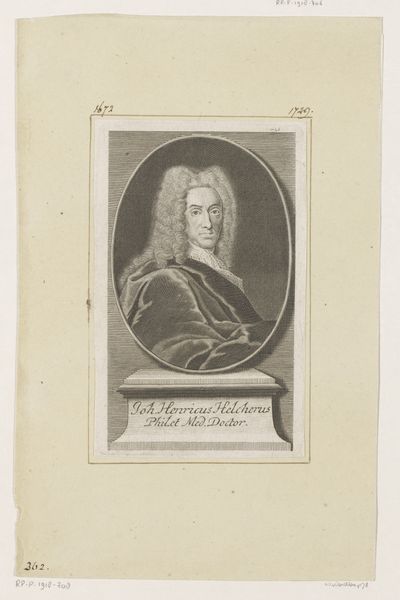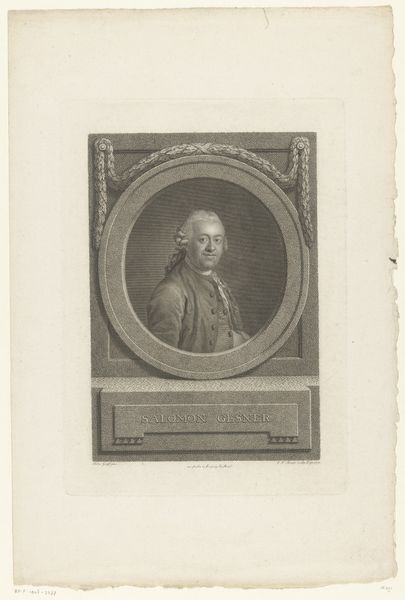
Dimensions: height 186 mm, width 126 mm
Copyright: Rijks Museum: Open Domain
Editor: This is a portrait of Paul Gottlieb Werlhof, created around 1775 by Gottlob August Liebe. It's an engraving, so made by cutting lines into a metal plate which then transfers ink to paper. It’s quite a formal portrait. What stands out to you? Curator: Well, focusing on the engraving process, think about the labor involved. Each line is deliberate, representing time and skill invested. This wasn’t just about capturing Werlhof's likeness; it was a display of artisanal prowess. Consider the socio-economic implications – who commissioned this print, and for what purpose? Editor: It definitely feels like it was made for a specific audience, likely upper class, due to the expense of the materials and the artistry involved. Curator: Exactly. And the materiality speaks volumes. Paper wasn't as accessible as it is now. Its very presence suggests wealth and status. The bow at the top, the frame – they’re not merely decorative. They speak to the visual language of power and privilege in that era, manufactured through laborious engraving processes. Editor: So you're saying the print isn't just a portrait, it’s an artifact loaded with social information revealed through its materials and process? Curator: Precisely. Even the ink contributes to the narrative. Think about where it came from, how it was produced, and how it helped circulate this image, and the ideas embedded within it. This image enters a consumer cycle, re-iterating power dynamics each time. It goes beyond aesthetics and reveals layers of production, consumption and social standing. What does considering those material contexts change for you? Editor: It shifts the focus. I hadn't thought about the physical materials or the printing process as statements of power, but you’re right. That bow alone now looks like a very deliberate symbol! Curator: And that’s how a materialist lens allows us to unpack the artwork, moving past the simple subject and exploring the systems that produced and perpetuate it.
Comments
No comments
Be the first to comment and join the conversation on the ultimate creative platform.
